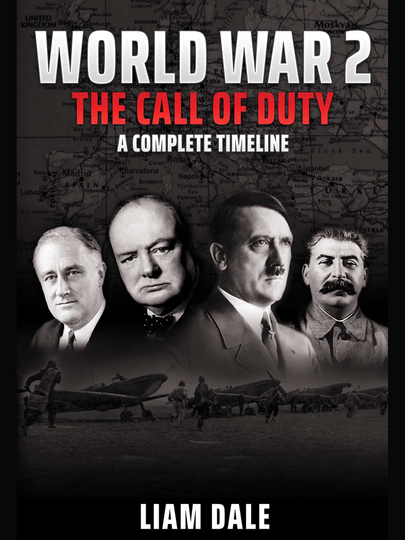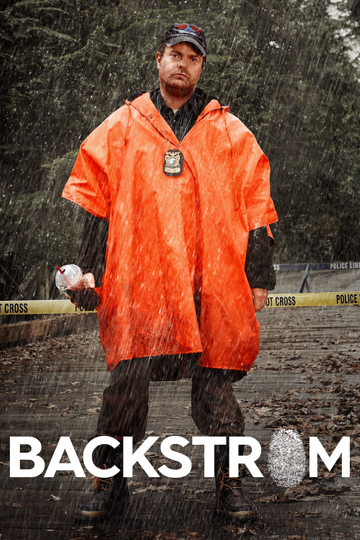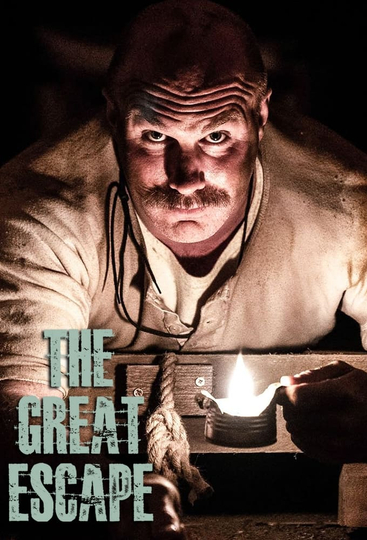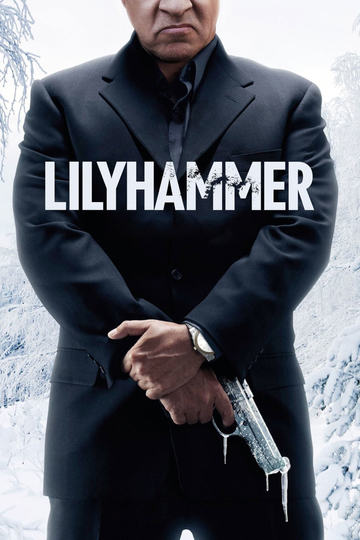Watch 'World War 2 - The Call of Duty: A Complete Timeline' Season 1 Online

Season 1 Episodes
1. The Road to War (September - December 1939)
When Adolf Hitler marched his troops into Poland on September 1, 1939, the Second World War was inevitable. As the opening skirmishes are played out, see the events that shaped the escalating crisis.
2. Battle Lines Drawn (January - March 1940)
As the New Year dawned and the people of Britain faced the introduction of rationing, all eyes turned northwards to Scandinavia, where Adolf Hitler was preparing for a full-scale invasion. U-Boat attacks increased and at Scapa Flow a German Air Raid claimed the first British casualties.
3. First Blood (April - June 1940)
When Winston Churchill became Prime Minister of the wartime coalition government in May 1940 he pledged his "blood, toil, tears and sweat" and within days of his appointment, he was called upon to honor his promise. As the Low Countries fell to Adolf Hitler, and France was poised to follow suit, rescuing thousands of Allied servicemen from the beaches of Dunkirk was Churchill's top priority. English
4. Britain Under Attack (July - September 1940)
With mainland Europe under Hitler's control, the German Führer turned his attention to Operation Sealion, and the Battle of Britain, expecting an easy victory. However, he'd underestimated the enormity of the task and the spirit of a nation inspired by Winston Churchill.
5. Fighting Further Afield (October - December 1940)
Worldwide, the conflict continued to escalate as Japan made their presence felt as signatories of the Tripartite Pact, giving Hitler's Axis of Evil more power than ever. Britain stood alone as the nightly bombing raids of the Blitz devastated major cities, while overseas British troops joined the Allied campaign for supremacy in North Africa.
6. On Land, In the Air and All at Sea (January - March 1941)
The Luftwaffe continued its attempts to bomb Britain into submission, while the German Afrika Korps strengthened its position as Rommel, Hitler's "Desert Fox", took charge. At sea, the naval forces battle each other and the elements, as the Japanese embark upon a spy mission to gather information about the American Fleet at Pearl Harbor.
7. The Blitz, the Bismarck and Barbarossa (April - June 1941)
With Britain failing to fall at Hitler's feet, the Blitz drew to a close, as the Führer turned his attention eastwards. The sinking of the German battleship, the Bismarck, lifted the spirits of the British Navy, and as Hitler's campaign for Russia, code-named Operation Barbarossa, got underway, the course of World War II veered dramatically.
8. Russian Roulette (July - September 1941)
If Hitler had expected a decisive victory in Russia, at speed, he was thwarted at every turn and while the Luftwaffe bombed Moscow and the Siege of Leningrad began, the Soviet Red Army refused to capitulate as they watched and waited for the winter snows. Trouble was also brewing in the Pacific as America took diplomatic action against the Japanese.
9. America at War (October - December 1941)
As Hitler and the Germans focused on Russia, the situation in the Pacific developed to epic proportions when the Japanese air force attacked the American Naval Fleet, stationed at Pearl Harbor on the 7th of December. This immediately brought the USA into the fray, and back in the European Theatre of War, Hitler now had a great deal more than Russia to worry about.
10. The Fall of Singapore (January - March 1942)
With Britain no longer facing Hitler alone, the first G.l.s arrived in the UK, while the Japanese took the advantage afforded them by their surprise attack on Pearl Harbor. As Singapore fell…..
11. Battle of Midway and Beyond (April - June 1942)
It was time for the American Navy to get back on course after Pearl Harbor, and in the four-day Battle for the Coral Sea, they claimed victory over the Japanese, before defeating them again in the decisive Battle of Midway. Elsewhere the Luftwaffe went back to targeting more British cities in the Baedeker Raids.
12. El Alamein to Stalingrad (July - September 1942)
Hitler's "Desert Fox", Rommel pushed forward at El Alamein, but with the arrival of the maverick British General, Bernard Montgomery, to take charge of the Eighth Army in North Africa, the wind of change was about to blow. Meanwhile on the Russian Front Hitler's troops advanced their Stalingrad campaign, with the Führer boasting that this key city would soon be his.
13. The Tide Begins to Turn (October- December 1942)
After so many years of German supremacy, as 1942 drew to a close, the Allies were really beginning to make headway. The British made a crucial breakthrough in North Africa, and the Americans pushed the Japanese out of Burma and New Guinea, while in Russia the Germans found themselves surrounded, as the winter snow set in over Stalingrad.
14. Facing the Music (January - March 1943)
The only option for the German Sixth Army at Stalingrad was surrender, while all across Russia the Red Army consolidated their advantage. Also, as German cities encountered the kind of bombing that Britain faced back in 1940, courtesy of the RAF, the Allied commanders planned a return to France at the Casablanca Conference.
15. Resistance is Never Futile (April - June 1943)
Even with little hope of making an impact against the Germans, the fight for freedom continued. Polish Jews of the Warsaw Ghetto rose up in the face of the horrors of the Nazi Concentration Camps, German army units were needed to deal with the situation. The French Resistance was formed, and with the Dambuster Raids attacking the Industrial Ruhr, the Allied progress although was slow but sure.
16. Tentative Steps (July - September 1943)
From their success in North Africa the Allies were ready to return to occupied Europe, first landing on Sicily before moving north onto mainland Italy under the command of Montgomery, known fondly by his men as Monty. But as the Italians surrendered, the Germans occupied Rome, making the battle for Italy a long, hard road, while the plans for the invasion of Northern France steadily took shape.
17. New Challenges (October - December 1943)
While Hitler faced frustrations on all fronts, the Japanese were kept at bay by the Americans, despite heavy casualties, the Allied leaders faced a new challenge. Churchill and Roosevelt had always been comfortable working together, but Russian leader Joseph Stalin added tension. With the invasion of France imminent, plans made at the Teheran Conference were a full of diplomatic negotiations.
18. Blueprint for Victory (January - March 1944)
As winter gave way to spring the world watched and waited as the Allied forces prepared for Operation Overlord. Brave and daring, risking all, U.S. General Dwight D. Eisenhower took charge of the campaign to deliver the fight for freedom directly to Adolf Hitler.
19. D-Day at Last (April - June 1944)
One of the main reasons for the success of the D-Day landings was the element of surprise, the incredibly huge invasion force, congregating along the south coast of England went undetected by German Intelligence. Hitler's Generals believed the stormy weather meant it would be mission impossible, and it almost was.
20. Liberty, Equality and Fraternity (July - September 1944)
As the liberation of France got underway, the citizens of a nation oppressed since 1940 celebrated the Allied arrival with rapture. But there was still much to be achieved, on both the Western and Eastern Fronts. For Hitler the writing was on the wall, and when one of his own, Claus von Stauffenberg attempted to assassinate the Führer, he very nearly succeeded.
21. Onwards, Ever Onwards (October- December 1944)
Despite Hitler's position was worsening by the day, the Nazis were still capable of inflicting terrible damage, and when the Germans attempted a breakthrough in the Ardennes region of France, the ensuing Battle of the Bulge resulted in terrible U.S. casualties. Even so, the Germans failed to achieve their objectives, and as the year came to an end, so did Hitler's last hopes of victory.
22. The Race for Berlin (January - March 1945)
While the Russians moved towards Germany from the East, and the Western allies attacked from the opposite direction, the Japanese continued their battle in the Pacific, fighting American Marines to the death on the island of Iwo Jima. As the endgame came into sight, there were desperate measures taken by both sides, and the casualties kept on rising.
23. Churchill's Finest Hour (April - June 1945)
The Russians entered Berlin first, and as Hitler took his own life in his bunker, the war in Europe finally came to an end. Churchill led the people of Britain in the VE Day celebrations, but the fighting continued in the Pacific. Sadly, President Roosevelt died in April, just weeks before VE Day, and the task of finishing the war was passed to the new American President, Harry S. Truman.
24. Brave New World (July - September 1945)
With Europe sifting through the rubble of a long and bitter war, the Japanese, true to their cultural heritage refused to surrender. The prospect of a protracted land campaign, resulting in the deaths of many more American military personnel, was too high a price to pay, leaving Truman to make the decision to end World War II swiftly, with the nuclear bombing of Hiroshima and Nagasaki.













































